Varkala
Overview
Varkala is a coastal town located in the Thiruvananthapuram district of Kerala, famous for its stunning cliffs overlooking the Arabian Sea. Unlike other beaches in Kerala, Varkala is unique because of its laterite cliffs, which provide a dramatic backdrop to the sandy shores below. The town attracts tourists seeking both natural beauty and a serene coastal experience, making it a popular destination for domestic and international travelers alike.
The most famous feature of Varkala is the Varkala Cliff, lined with cafes, shops, and resorts that overlook the ocean. Below the cliffs lies Papanasam Beach, named for its holy waters believed to wash away sins. The beach is popular for swimming, sunbathing, and meditation, while the cliff area offers panoramic views of sunsets and the vast expanse of the Arabian Sea. The town also has a laid-back atmosphere that attracts yoga enthusiasts and wellness travelers.
Apart from its natural attractions, Varkala holds cultural and spiritual significance. The Janardhana Swamy Temple, located near Papanasam Beach, is a centuries-old Hindu temple dedicated to Lord Vishnu and draws pilgrims year-round. Varkala also hosts festivals, traditional rituals, and offers Ayurvedic treatments, making it a holistic destination combining relaxation, spirituality, and scenic beauty. Its combination of cliffs, beaches, and cultural richness makes Varkala a must-visit spot in Kerala.
Tourist places in Varkala
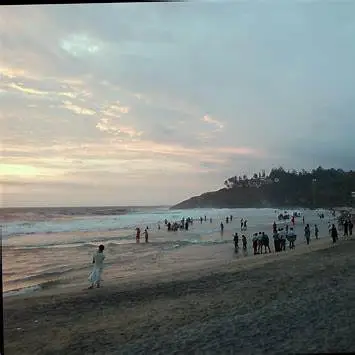
Varkala Beach
Varkala Beach, also known as Papanasam Beach, is a picturesque coastal destination in Kerala, located in the town of Varkala in the Thiruvananthapuram district. Unlike many other beaches in the region, it is famous for its laterite cliffs that rise dramatically above the Arabian Sea, creating a unique and scenic landscape. These cliffs offer panoramic views of the coastline and are lined with vibrant cafes, shops, and resorts, making the area lively yet serene.The beach itself is known for its golden sands and tranquil waters, which attract both domestic and international tourists. Swimming, sunbathing, and leisurely walks along the shoreline are popular activities. The name “Papanasam,” meaning “destruction of sins,” comes from the belief that taking a dip in its waters washes away sins, adding a spiritual dimension to the natural beauty of the beach.
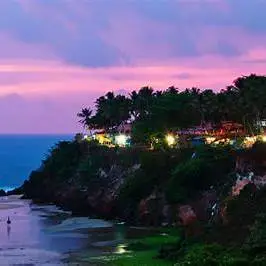
Varkala Cliff
Varkala Cliff is a striking natural formation that rises 50–60 meters above the Arabian Sea in the coastal town of Varkala, Kerala. Unlike typical beaches, the cliffs provide a dramatic backdrop to the sandy shoreline below, offering breathtaking panoramic views of the sea. The cliffs are composed of red laterite rock, which creates a unique contrast with the blue waters and golden sands, making it a favorite spot for photographers and nature lovers.The cliff area is lined with shops, cafes, restaurants, and small hotels, giving it a lively yet relaxed vibe. Visitors can enjoy local and international cuisine while gazing at the ocean, or simply relax on the cliffside benches as they watch the sun set over the horizon. The Varkala Cliff walkway is a popular destination for both tourists and locals, offering opportunities for shopping, dining, and experiencing the vibrant coastal culture.
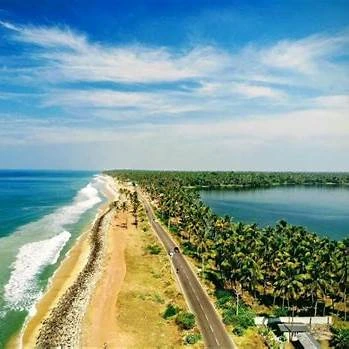
Kappil Beach
Kappil Beach is a serene coastal destination located near Varkala in the Thiruvananthapuram district of Kerala. It is known for its pristine golden sands, calm waters, and scenic surroundings, making it a quieter alternative to the busier Varkala Beach. The beach stretches along the backwaters where the Kappil Lake meets the Arabian Sea, creating a picturesque landscape of lagoons, coconut palms, and tranquil waters.
The beach is ideal for relaxation, photography, and nature walks. Visitors can enjoy the peaceful environment while watching fishermen at work or observing local birds in the area. Small shacks near the beach offer refreshments, making it convenient for tourists to spend time while enjoying the scenic beauty.
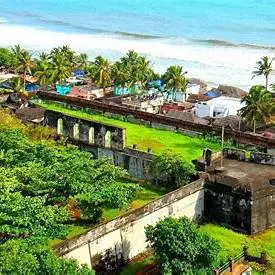
Anjengo Fort
Anjengo Fort, also known as Anchuthengu Fort, is a historic coastal fort located near Varkala in the Thiruvananthapuram district of Kerala. Built in 1695 by the British East India Company, it was originally established as a trading post and a strategic defensive structure along the Malabar Coast. The fort played a significant role in the spice trade, particularly in pepper and coconut, and served as a base for the British to secure their trading interests against local rulers and rival European powers.
The fort is constructed primarily from laterite stones, featuring thick walls, bastions, and a central courtyard. Although parts of the fort are now in ruins, it still retains its colonial charm and historical significance. Visitors can explore the remnants of old warehouses, cannons, and watchtowers while enjoying scenic views of the Arabian Sea and surrounding coastline. The site also has a small cemetery with graves of British officers, reflecting its historical past.
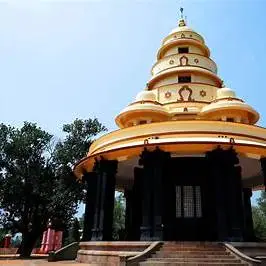
Sivagiri Mutt
Sivagiri Mutt is a prominent pilgrimage center located near Varkala in the Thiruvananthapuram district of Kerala. It was founded by the social reformer Sree Narayana Guru in the early 20th century and serves as the headquarters of the Sree Narayana Dharma Paripalana (SNDP) movement. The mutt is situated on the Sivagiri Hill, overlooking the Arabian Sea, and is renowned for its spiritual, cultural, and social significance.
The mutt is known for its distinctive architecture, which combines traditional Kerala design with simple yet elegant structures suitable for meditation, prayer, and communal gatherings. The complex houses the samadhi (tomb) of Sree Narayana Guru, which is a focal point for devotees. Every year, thousands of pilgrims visit the mutt, especially during the Sivagiri Pilgrimage (Sivagiri Theerthadanam) held in January, which commemorates the Guru’s life and teachings.